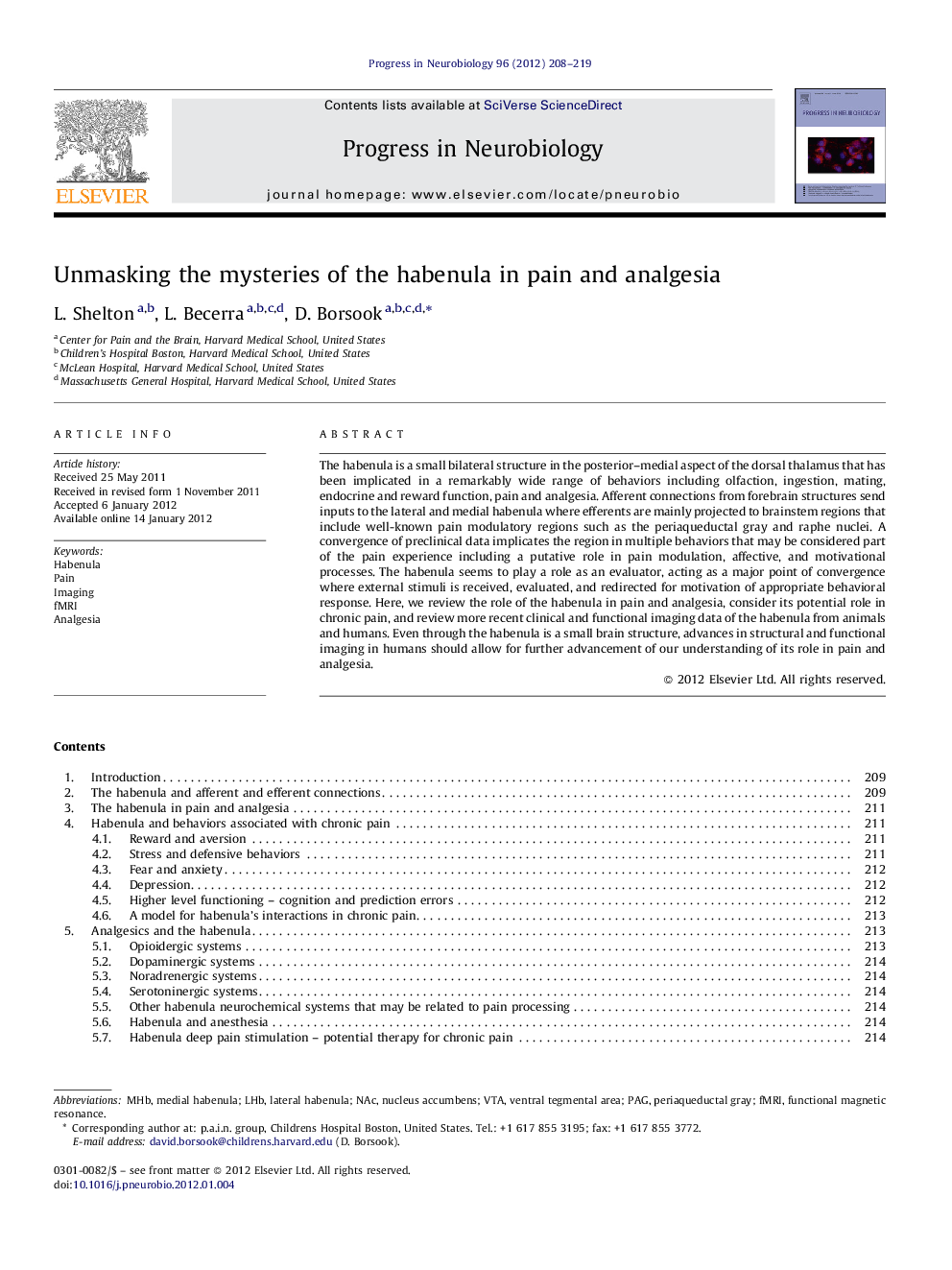| Article ID | Journal | Published Year | Pages | File Type |
|---|---|---|---|---|
| 4353429 | Progress in Neurobiology | 2012 | 12 Pages |
The habenula is a small bilateral structure in the posterior–medial aspect of the dorsal thalamus that has been implicated in a remarkably wide range of behaviors including olfaction, ingestion, mating, endocrine and reward function, pain and analgesia. Afferent connections from forebrain structures send inputs to the lateral and medial habenula where efferents are mainly projected to brainstem regions that include well-known pain modulatory regions such as the periaqueductal gray and raphe nuclei. A convergence of preclinical data implicates the region in multiple behaviors that may be considered part of the pain experience including a putative role in pain modulation, affective, and motivational processes. The habenula seems to play a role as an evaluator, acting as a major point of convergence where external stimuli is received, evaluated, and redirected for motivation of appropriate behavioral response. Here, we review the role of the habenula in pain and analgesia, consider its potential role in chronic pain, and review more recent clinical and functional imaging data of the habenula from animals and humans. Even through the habenula is a small brain structure, advances in structural and functional imaging in humans should allow for further advancement of our understanding of its role in pain and analgesia.
► Convergent data implicating a habenula role in pain processing. ► The anatomy of the habenula is dissected to show connectivity with afferent and modulatory pain systems. ► The habenula in pain and analgesia. ► Habenula and behaviors associated with chronic pain. ► Functional imaging of the habenula.
